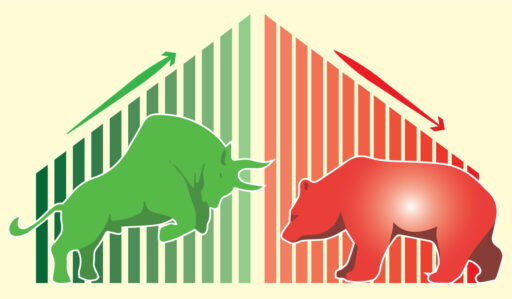Streaming Media and Electricity Lead H1 Winners
Time flies! 2025 is already halfway through, and it’s time for the usual midyear stock market review. Let’s take a look at the top winners and losers in the U.S. stock market during the first half of

Time flies! 2025 is already halfway through, and it’s time for the usual midyear stock market review. Let’s take a look at the top winners and losers in the U.S. stock market during the first half of the year.
(*Market cap>$100B, Until 30th June market close)
AI remained the dominant theme among the best-performing stocks, but the gains have broadened beyond the “Magnificent Seven.”
The biggest winner so far is Palantir, often seen as the second AI leader (behind NVIDIA). The company’s software has played a major role in military operations, and 2025 has been filled with geopolitical turmoil, pushing governments and military forces to sign large contracts with Palantir.
Recently, however, Palantir’s stock has lost some steam after the U.S. Department of Defense cut its budget. That matters, as government contracts made up nearly half of Palantir’s 2024 revenue.
Palantir is aware of the risks of relying too heavily on governments. It has developed a commercial data platform called “Foundry,” used for forecasting, supply chain management, and operational optimization. Notable clients include Airbus, BP, and Pfizer.
Looking ahead, Palantir will need stronger financials to justify its sky-high valuation, which currently stands at over 500x PE.
Beyond Palantir, top-performing stocks were mainly concentrated in two themes: energy (especially electricity) and content subscriptions. Trump’s reciprocal tariff policy only impacts physical goods, leaving digital subscription companies like Netflix and Spotify relatively untouched—making them tariff havens. Similar trends were seen in Hong Kong-listed peers like Tencent Music and NetEase Cloud Music, both up significantly this year.
Another bright spot: electric utilities. In the AI era, tech giants need massive data centers and, correspondingly, massive electricity. With global carbon neutrality goals in focus, nuclear and uranium stocks surged as they offer more reliable clean power compared to wind or hydro. These companies were among H1’s biggest winners.
Now onto the worst performers—and two members of the “Magnificent Seven” appear on the losers list.
The biggest flop? UnitedHealth. The company faced a public backlash over high denial rates, its CEO was even physically attacked, and it's under criminal investigation by the U.S. Department of Justice over alleged Medicare fraud.
Among the Magnificent Seven, Apple and Tesla also made the bear list. What happened?
Let’s start with Tesla. Elon Musk's fortunes rose with Trump’s support—but now they’ve fallen out over the controversial “Great American Act.” Their political rift, paired with Tesla’s weak fundamentals, weighed heavily on the stock. Tesla lost its EV crown to BYD, and Musk’s personal image slump further hurt sales.
Apple, meanwhile, has been the slowest in the AI race. Its long-awaited "Apple Intelligence" failed to impress users and can’t launch its full version in the EU due to regulatory issues. In China, domestic competitors keep eating into its market share. Its incremental innovation in recent years has also reduced the appeal of upgrading iPhones.
Other H1 underperformers were found in biotech and AI-disrupted sectors. After years of rapid growth, biotech fundraising has slowed. Pharmaceutical and medtech stocks fell from their peaks. Merck’s flagship HPV vaccine hit demand saturation amid competition, while Novo Nordisk was beaten back by Eli Lilly in the weight-loss drug market.
On the AI front, there are winners—but also casualties. Companies like Salesforce and Adobe were hit hard as AI disrupted their core businesses. With inadequate responses to the threat, investors turned away.
Looking ahead, some of these H1 winners might carry momentum into year-end, while some losers may stage a comeback. Trump’s 90-day tariff pause ends in mid-July, and tariffs could again become a major market theme. AI and electricity remain core narratives—but will new leaders emerge? Let’s meet again in six months to find out.
Disclaimer: The views in this article are from the original Creator and do not represent the views or position of Hawk Insight. The content of the article is for reference, communication and learning only, and does not constitute investment advice. If it involves copyright issues, please contact us for deletion.